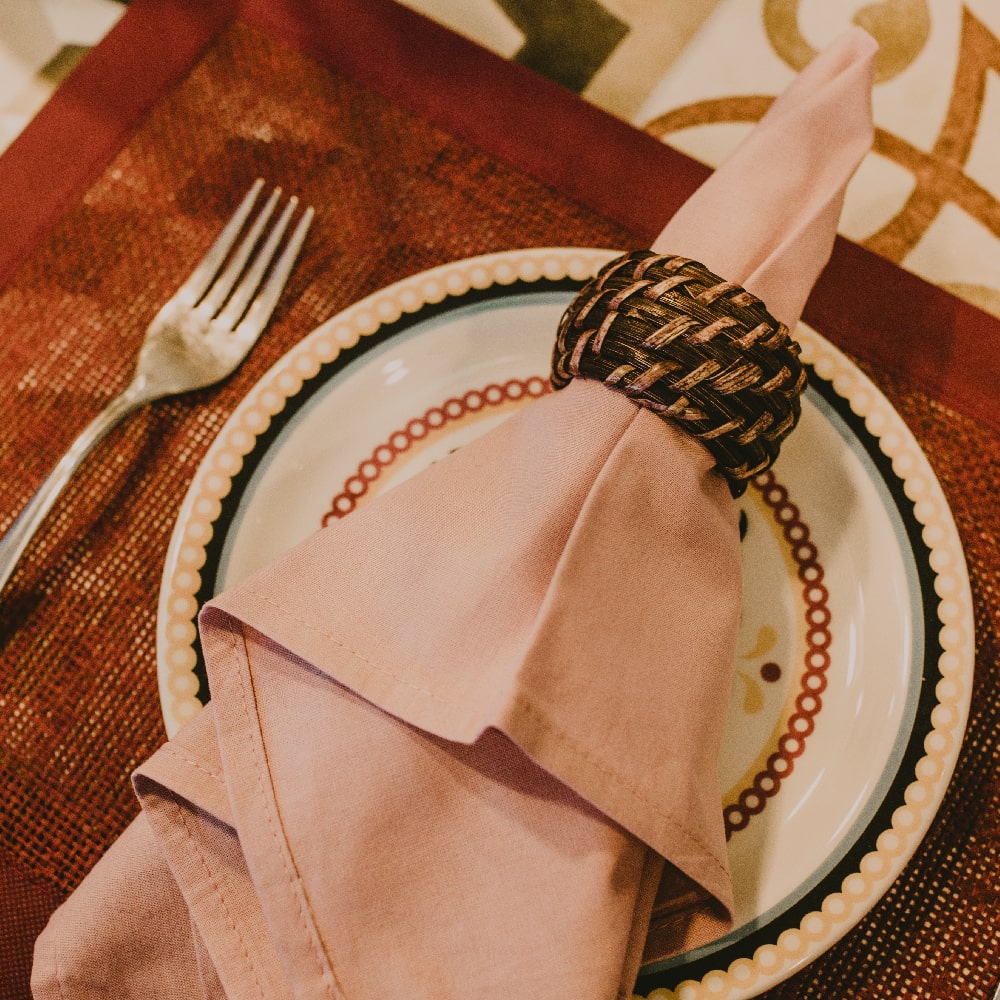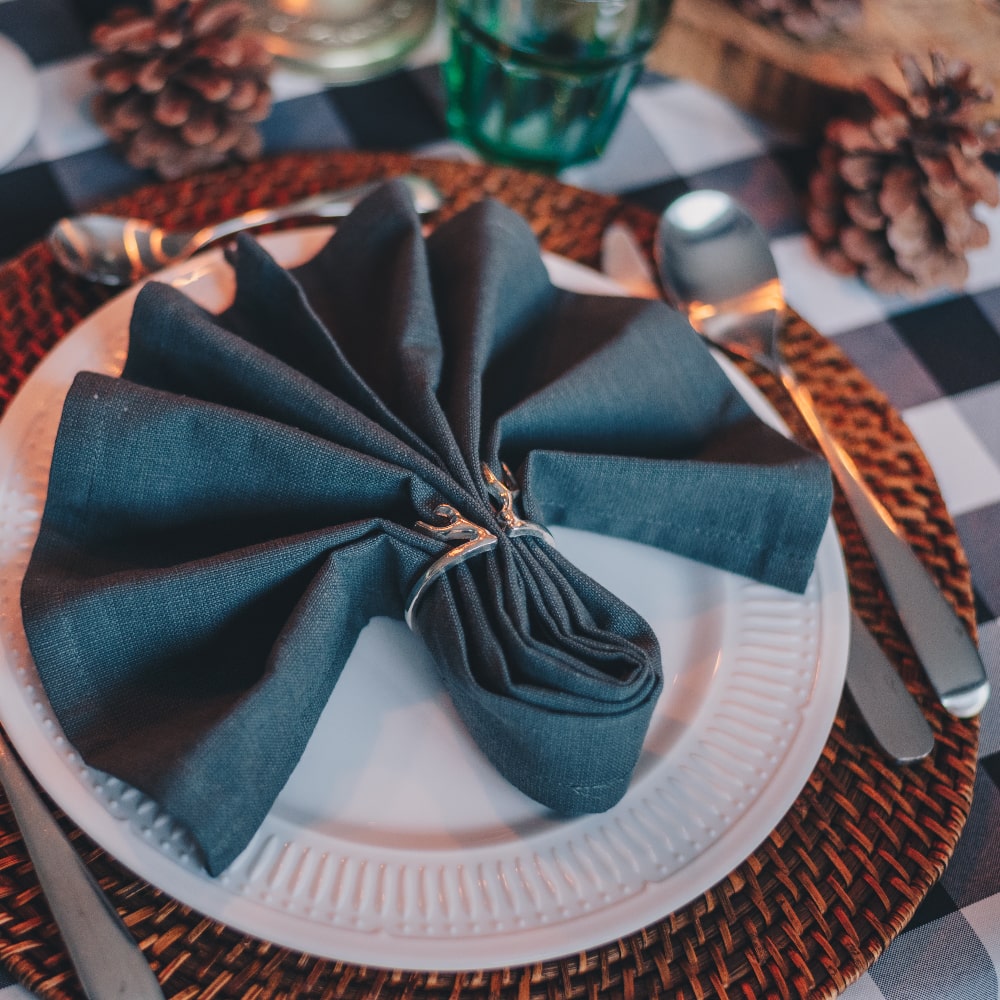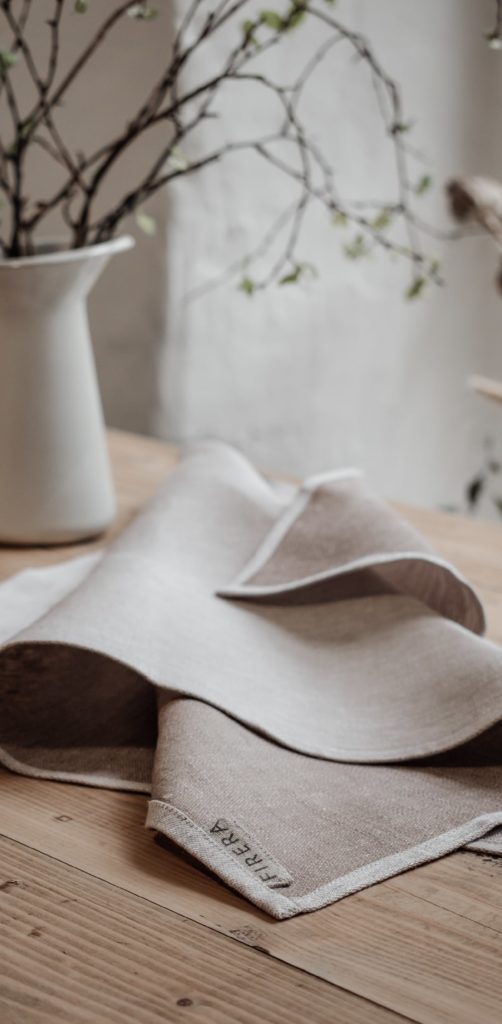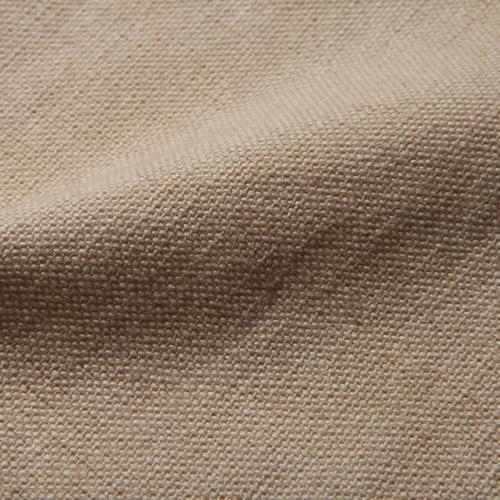Home Ware
Napkin
Napkin
A napkin, serviette or face towelette is a rectangle of cloth used at the table for wiping the mouth and fingers while eating. It is usually small and folded, sometimes in intricate designs and shapes. The word comes from Middle English, borrowing the French nappe—a cloth covering for a table—and adding -kin, the diminutive suffix.
Conventionally, the napkin is folded and placed to the left of the place setting, outside the outermost fork. In a restaurant setting or a caterer’s hall, it may be folded into more elaborate shapes and displayed on the empty plate. Origami techniques can be used to create a three-dimensional design. A napkin may also be held together in a bundle with cutlery by a napkin ring. Alternatively, paper napkins may be contained within a napkin holder.



The use of paper napkins is documented in ancient China, where paper was invented in the 2nd century BC. Paper napkins were known as chih pha, folded in squares, and used for the serving of tea. Textual evidence of paper napkins appears in a description of the possessions of the Yu family, from the city of Hangzhou.
Paper napkins were first imported to the US in the late 1800s but did not gain widespread acceptance until 1948, when Emily Post asserted, “It’s far better form to use paper napkins than linen napkins that were used at breakfast.

